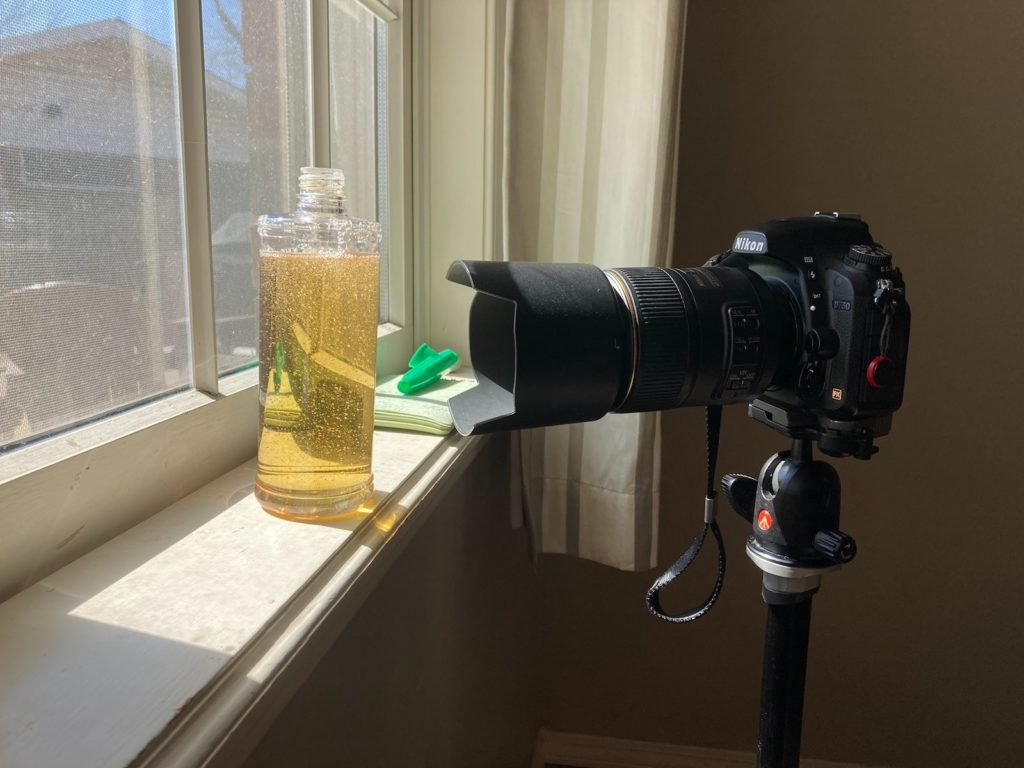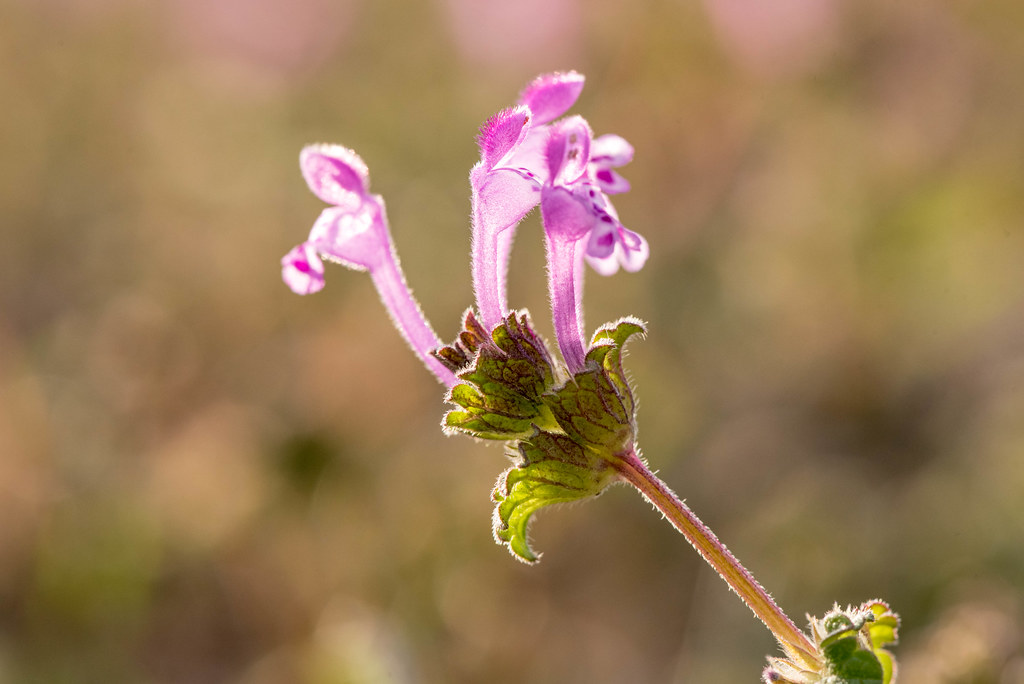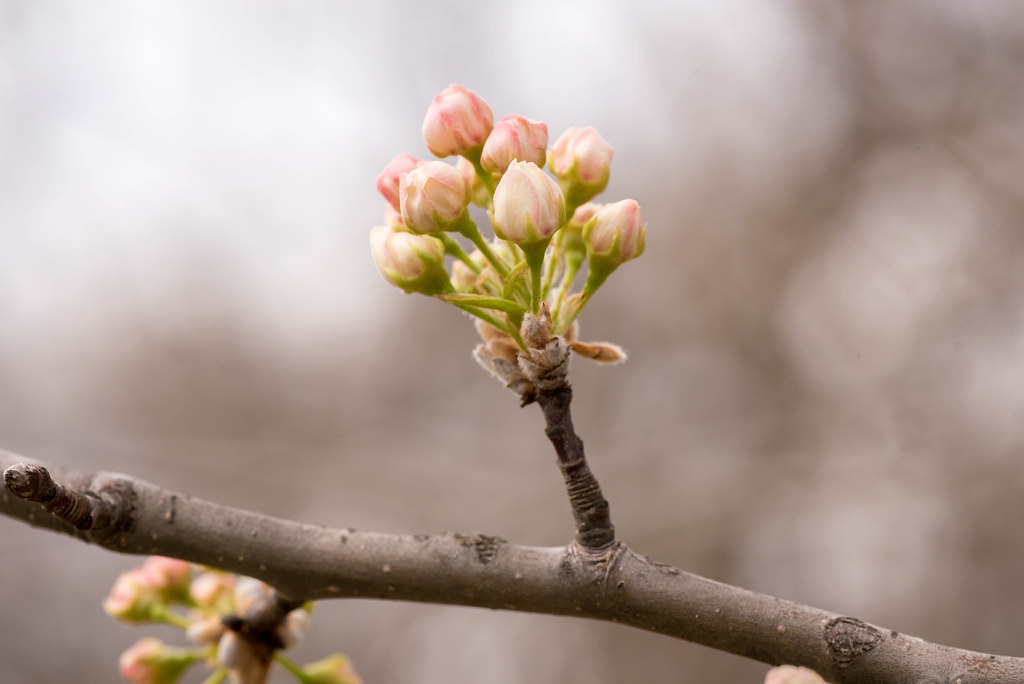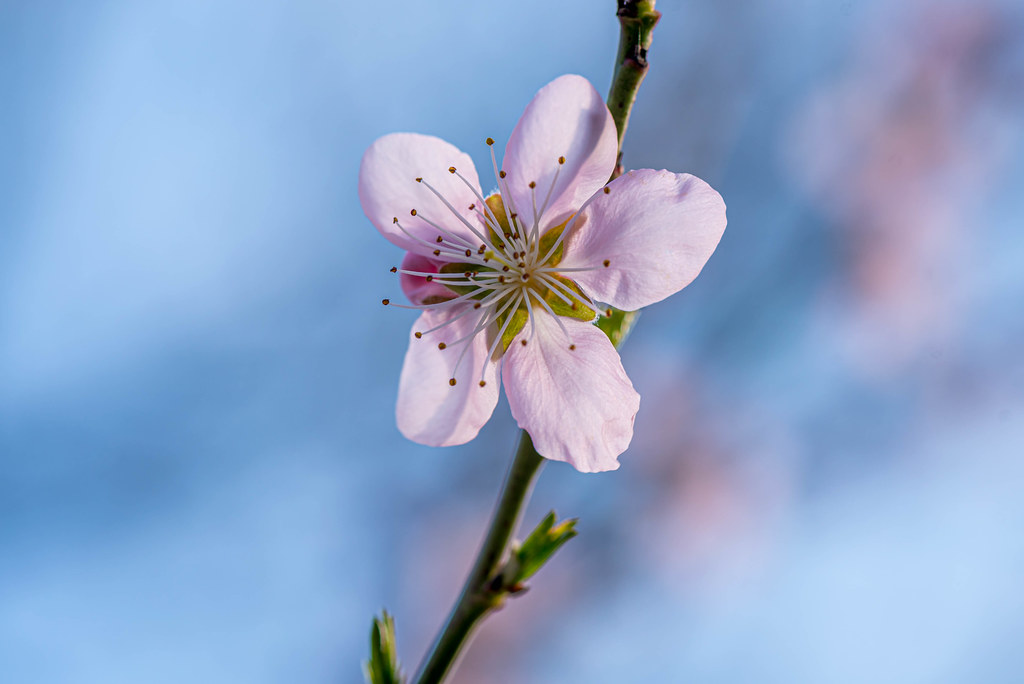
This was one of those unplanned moments of image-making serendipity that is so much fun, and one of my favorite aspects of photography in general. It came about completely and entirely by chance while I was completing some routine chores in the kitchen like washing dishes and helping our kids with their lunch on a sunny Sunday afternoon. I was refilling the soap dispenser in the sink when I noticed something kind of cool that never crossed my mind before: little bubbles, almost frozen in time, slowly wandering up through the translucent liquid on their way to the surface. It almost didn’t even register as a picture opportunity, but then I remembered one of the lessons from my brother’s recent visit: look to the familiar. And then look again.
I knew right away that I had to try to take a photo.
Here’s the setup I used:

I quickly discovered that this was going to be much more tricky than I initially realized. For starters, when viewed super duper up-close the bubbles moved way faster than I anticipated. My initial idea of using a small aperture and slow shutter was definitely not going to work. Also, even getting a clear bubble to focus on proved exceedingly tricky because they were so small and depth of field was so thin. Finally, I was hungry and didn’t want to spend hours composing a simple shot :)
I solved the first problem by moving the soap dispenser from the table over to the window as you can see in the above behind-the-scenes image. That gave me a lot more light to use, but then I realized another problem about the aperture. Even though I could now use a small aperture and a fast shutter speed, shooting at f/19 or f/22 meant that way too many bubbles were in focus and the resulting image was just kind of a mess without anything really interesting to look at. I dialed in a wide aperture of f/6.7 and slowly turned the manual focus dial on my lens while also rotating the soap dispenser until finally one bubble, the one you see in this week’s shot, became tack-sharp. I wish it had been a little bigger but, alas, that’s just the way things go in Albuquerque when taking pictures.
The large aperture meant that the one bubble, and pretty much only the one bubble, was sharp and focused which is exactly what I was hoping to do. The angle of my camera, and the backlighting of the sun, transformed all the other hundreds of tiny bubbles into beautiful out-of-focus blurry spots and the result is an image that I find fascinating and I hope you do too. Your eye is immediately drawn to the bubble, and then you (hopefully) start to notice other things like the bokeh on the left side and the variation of bokeh shapes from circles to footballs throughout the image.
That just leaves one big issue to address: the color of the image. It’s blue but, as you can see in the behind-the-scenes image, the original soap color is kind of a syrupy yellow. I used Photoshop (solid blue layer on bottom, and a blend mode of…I forget, honestly) to change the color to blue. Something about a close-up shot of yellow liquid just didn’t look all that great even though it was clearly much more representative of real life. Is it cheating to change the color to blue? I don’t know, and honestly, I don’t really know if I want to know. I like this color better, so I’m going with it :)
As a photographic experiment I would classify this as a resounding success, and as just something simple and fun to try I can confidently say it exceeded my quite meager expectations. Maybe I’ll try it again someday with soap of a different color and see what happens. Hmm.



